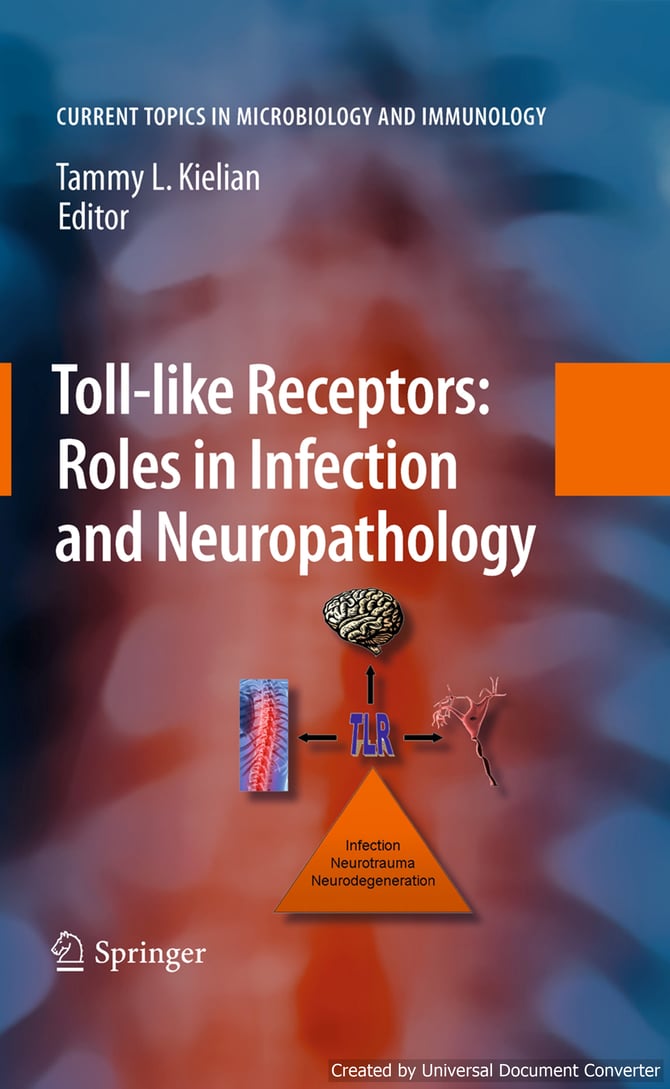
Toll-like Receptors: Roles in Infection and Neuropathology
Mammalian Toll-like receptors (TLRs) were first identified in 1997
based on their homology with Drosophila Toll, which mediates innate immunity
in the fly. Over the past eight years, the number of manuscripts describing TLR
expression and function in the central nervous system (CNS) has been increasing
steadily and expanding beyond their traditional roles in infectious diseases to
neurodegenerative disorders and injury. Interest in the field serves as the impetus
for this volume in the Current Topics in Microbiology and Immunology series
entitled Toll-Like Receptors: Roles in Infection and Neuropathology. The first five
chapters highlight more traditional roles for TLRs in infectious diseases of the
CNS. The second half of the volume discusses recently emerging roles for TLRs in
noninfectious neurodegenerative diseases and the challenges faced by these models
in identifying endogenous ligands. Several conceptual theories are introduced in
various chapters that deal with the dual nature of TLR engagement and whether
these signals favor neuroprotective versus neurodegenerative outcomes.
based on their homology with Drosophila Toll, which mediates innate immunity
in the fly. Over the past eight years, the number of manuscripts describing TLR
expression and function in the central nervous system (CNS) has been increasing
steadily and expanding beyond their traditional roles in infectious diseases to
neurodegenerative disorders and injury. Interest in the field serves as the impetus
for this volume in the Current Topics in Microbiology and Immunology series
entitled Toll-Like Receptors: Roles in Infection and Neuropathology. The first five
chapters highlight more traditional roles for TLRs in infectious diseases of the
CNS. The second half of the volume discusses recently emerging roles for TLRs in
noninfectious neurodegenerative diseases and the challenges faced by these models
in identifying endogenous ligands. Several conceptual theories are introduced in
various chapters that deal with the dual nature of TLR engagement and whether
these signals favor neuroprotective versus neurodegenerative outcomes.

